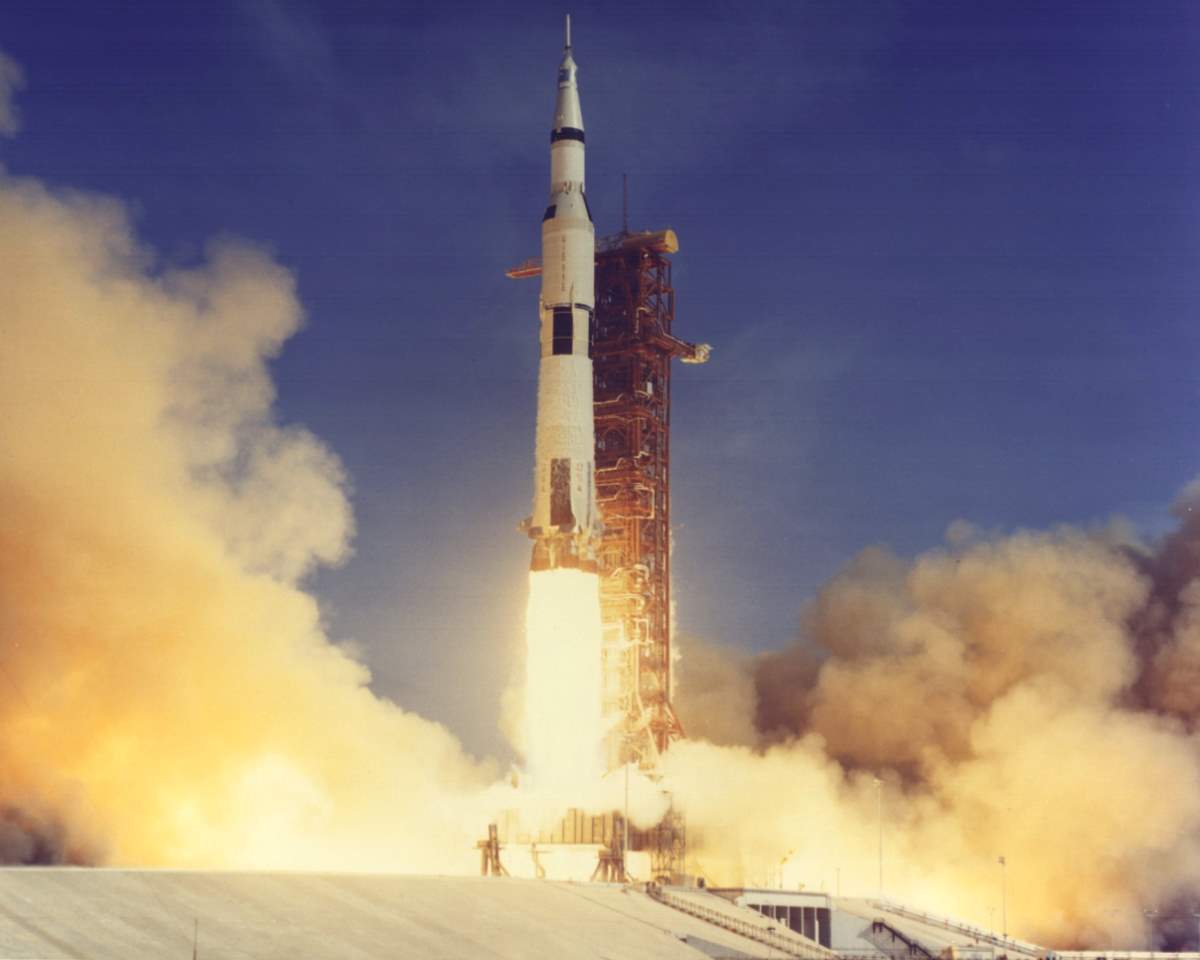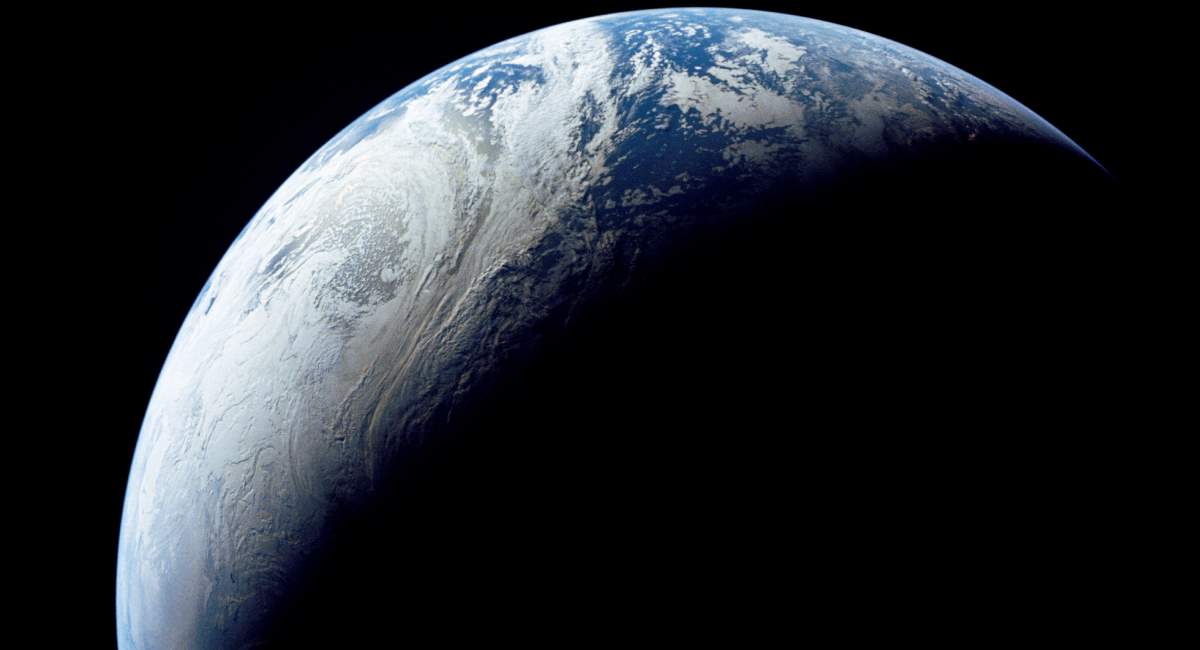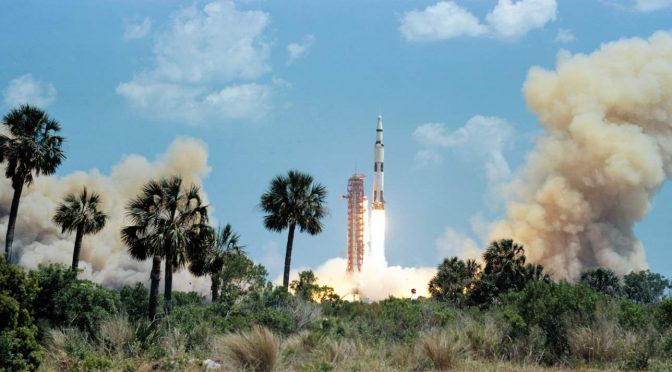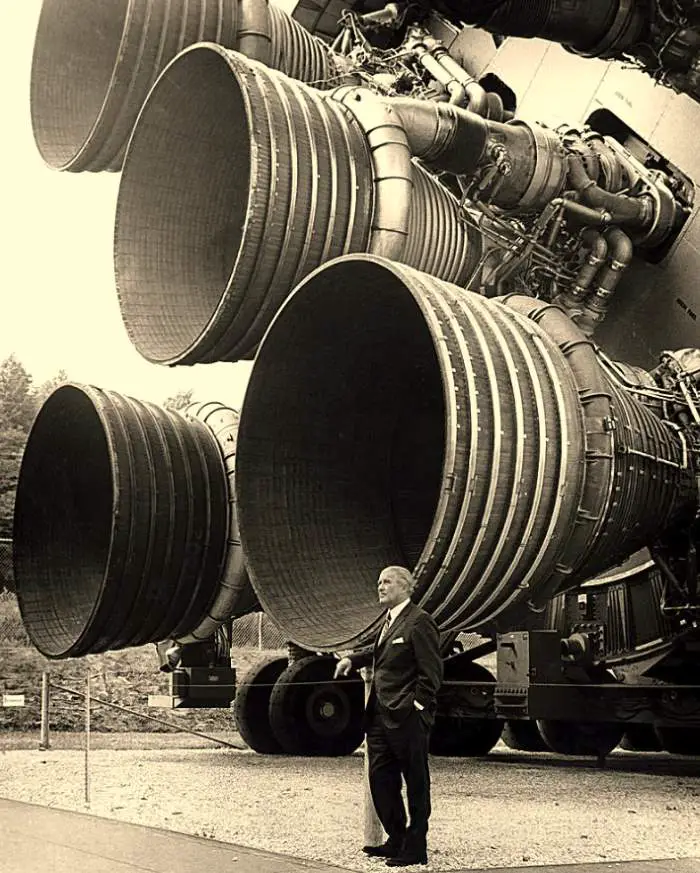Documentation about the Saturn V, the biggest and most powerful rocket ever built (as of 2021, it still holds both titles). The three-stage liquid-fueled super heavy-lift launch vehicle was used by NASA between 1967 and 1973. Saturn V was developed to support the Apollo program for the Moon landing and was later used to launch Skylab.
What’s more, to date, the Saturn V still remains the only launch vehicle to carry humans beyond low Earth orbit (see notes 1).
Its first stage was powered by five Rocketdyne F-1 engines. With a thrust of 1,746,000
“With time and perseverance, the rocket engineers solved problem after problem. However, time was a luxury the Apollo Program did not have.”
Saturn V, the rocket which took humans to the Moon
“It was the dawn of a new era in spaceflight. With five engines guzzling 15 tons of fuel every second to generate 160 million horsepower, the 6.1 million pound (2,767 tons) Saturn V rocket soared into the sky.”

An incredibly powerful rocket
Eight seconds before the Apollo 4 liftoff, the five Rocketdyne F-1 engines ignited, sending tremendous amounts of noise and vibration across the Kennedy Space Center. To protect from a possible explosion, the launch pads at LC-39 were located more than three miles (5 kilometers) from the Vertical Assembly Building (VAB); still, the sound pressure was much stronger than expected and buffeted the VAB, Launch Control Center, and press buildings.
Ceiling tiles fell around news reporter Walter Cronkite (November 4, 1916 – July 17, 2009), covering the launch for CBS News. Cronkite and producer Jeff Gralnick put their hands on the observation window in an effort to stop its powerful vibrations. Cronkite later admitted he was “overwhelmed” by the power of the rocket and the emotion of the moment. His on-air description was delivered without his usual poise and reserve as he yelled above the launch noise into his microphone.
… our building’s shaking here. Our building’s shaking! Oh, it’s terrific, the building’s shaking! This big blast window is shaking! We’re holding it with our hands! Look at that rocket go into the clouds at 3000 feet! … you can see it… you can see it… oh the roar is terrific!
Walter Cronkite, Broadcast of Apollo 4 launch
After the successful liftoff, Kennedy Space Center’s director, Dr. Kurt Debus (November 29, 1908 – October 10, 1983) spoke of that achievement. He said:
“After long years of preparing, designing, building, and constructing a new type facility, it was put to the test for the first time and it was done extremely well”.

Related: Earth as seen by Apollo 4
Under Dr. Kurt Debus, between 1952 and 1974 – the year he retired, NASA conducted 150 launches of military missiles and space vehicles, including 13 launches of the Saturn V rocket as part of the Apollo Moon landing program.
NASA’s Associate Administrator for Crewed Space Flight, Dr. George Mueller (July 16, 1918 – October 12, 2015) said:
“The maiden voyage of the Saturn V dramatically increased the confidence of people across the nation in the management of the largest research and development undertaking in which the Western world has ever engaged”.
Why Saturn V was a multi-stage rocket?
Why the Saturn V was a three-stage rocket? Because you can’t go to space with a single-stage launch vehicle (in fact you may go, but going to space is one thing, and staying there is another). And forget about getting to the Moon. In the video below, photographer Tim Dodd aka “Everyday Astronaut” explains why you can’t escape the Earth’s strong gravity with a single-stage rocket.
Notes
- Low Earth Orbit (LEO) is an orbit around Earth with an altitude between 160 kilometers (99 mi) (orbital period of about 88 minutes), and 2,000 kilometers (1,200 mi) (orbital period of about 127 minutes). For example, the International Space Station (ISS) is in Low Earth Orbit. It orbits the Earth at around 400 km (250 miles).
Sources
- Saturn V on Wikipedia
- Space Shuttle Endeavour’s Touchdown Meets Columbia’s Salute [An amazing photo from the past] - February 29, 2024
- Moon Landings: All-Time List [1966-2024] - February 23, 2024
- From Orbit to Ordinary: 10 Earthly Applications of Space Technology - January 23, 2024

